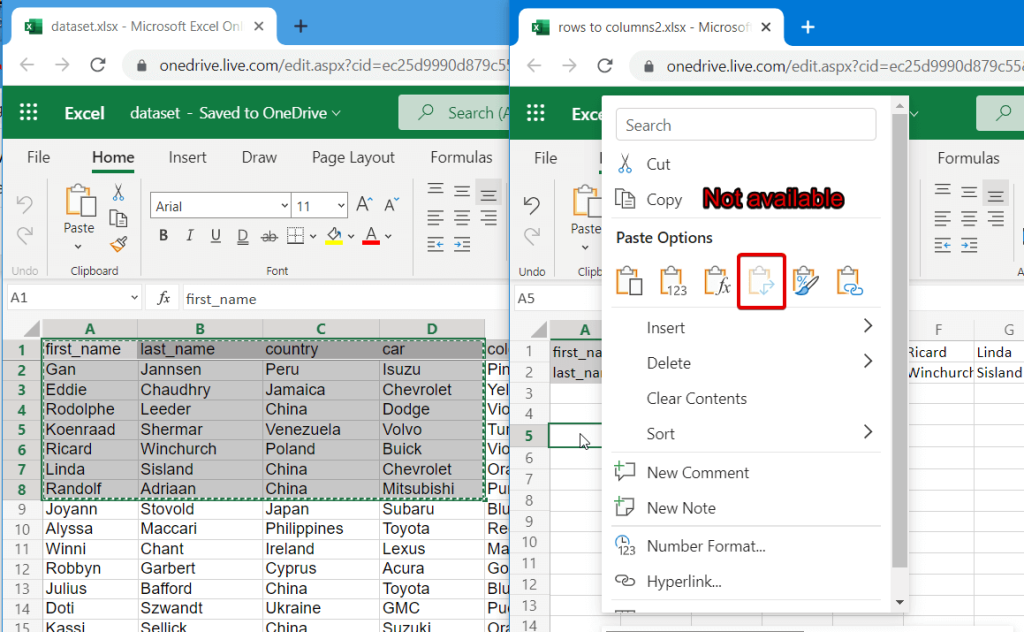


It stays the same while the underlying data changes. The transposed data in this case is static. In this approach, Excel's Paste Special Transpose tool is used to transpose the data. In Columns B-D, cells B5 to D9, values from cells B1 to B3 have now been reversed. Choose Transpose from the Paste Options menu when you right-click the starting cell for the transposed data (B5). To do this, choose and right-click the cells you want to transpose (C1:F1), then select Copy (or use CTRL + C on the keyboard). Transpose cells C1:F1 starting in cell B1 (such that the current value in cell B1 remains there). Now move the numbers from Row 1 to Column B using the Transpose Data tool. This section causes the text in cell B1 to be divided into Columns B through F at each semicolon. Leave the first cell blank to split data for the Destination. In the Data preview, you may also pick out certain columns and modify their data types. Other data kinds, such text or date, are also available for selection here. Leave the default data format (General) and click Finish to complete the process. Tab, comma, space, and user-defined delimiters are additional delimiters that could be used. You can see how this data will be delimited in the Data preview. Click Next after selecting Semicolon under Delimiters.

Click Next after leaving the default file type (Delimited) in Step 1 of the Text to Columns Wizard.ģ. Go to the Ribbon, choose a text cell (B1), and then select Data > Text to Columns. First, use a delimiter to divide the cell's values into columns. Let's say you wish to divide the semicolon-delimited product list in the image below into rows. With Excel's Text to Columns and Transpose Data functions, text in a single cell that is delimited by a certain character (such as a space, tab, semicolon, etc.) can be divided into numerous rows. Split a Text Cell into Two or More Rows in Excel There are several techniques in Excel to transform text to rows of data. In such cases, we might need to convert portion of the cell's data to columns. For analysis and report preparation, we occasionally need to extract data from a variety of files in a variety of formats.


 0 kommentar(er)
0 kommentar(er)
